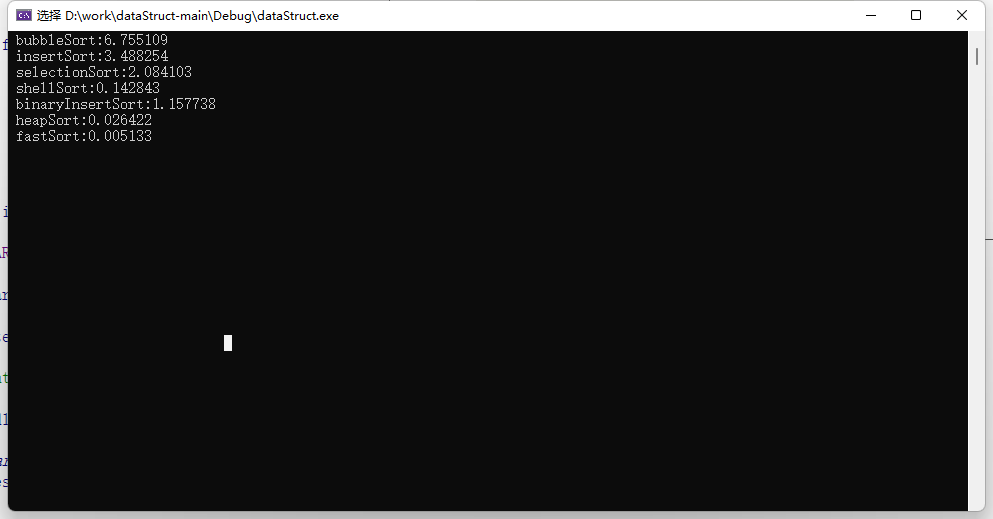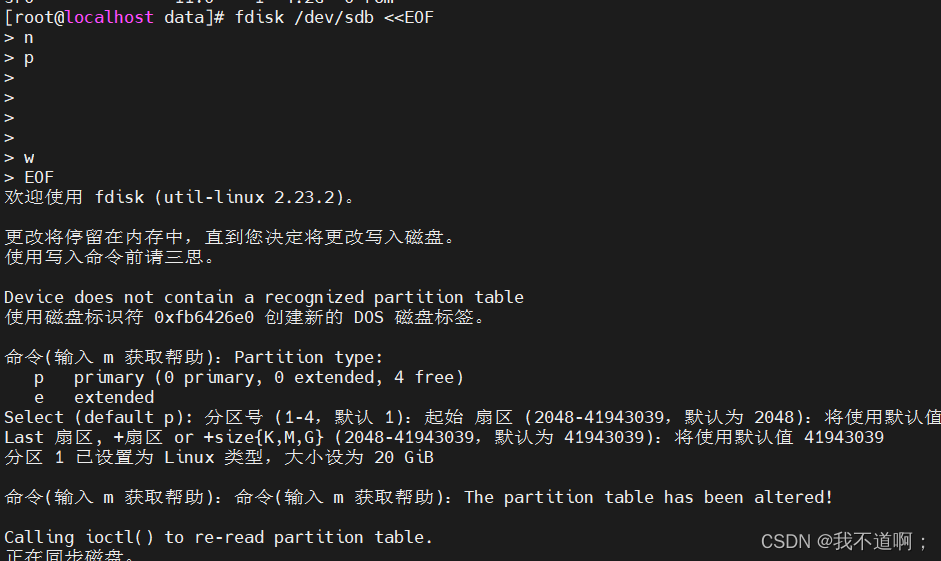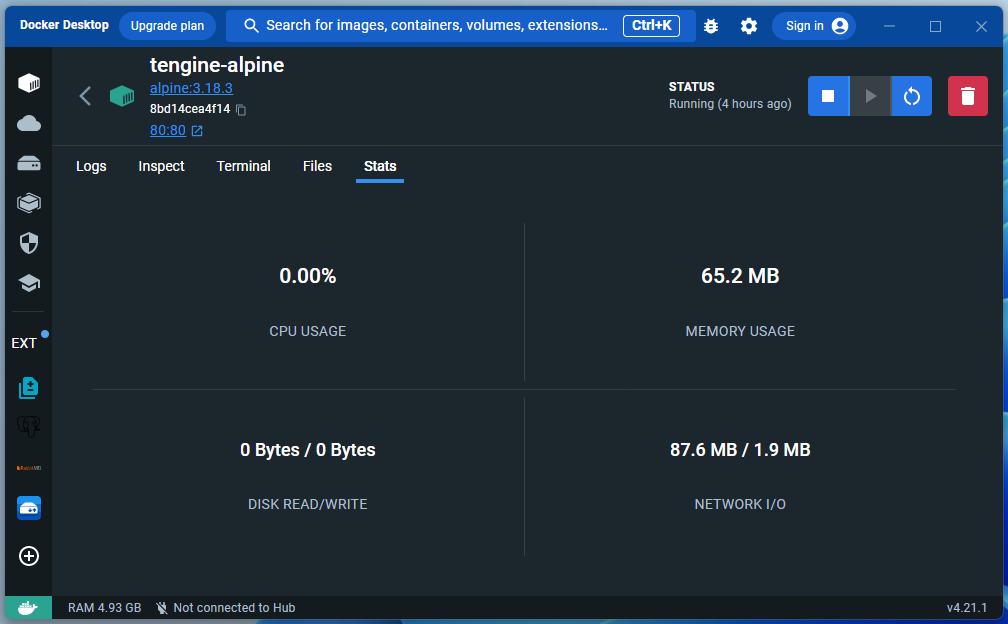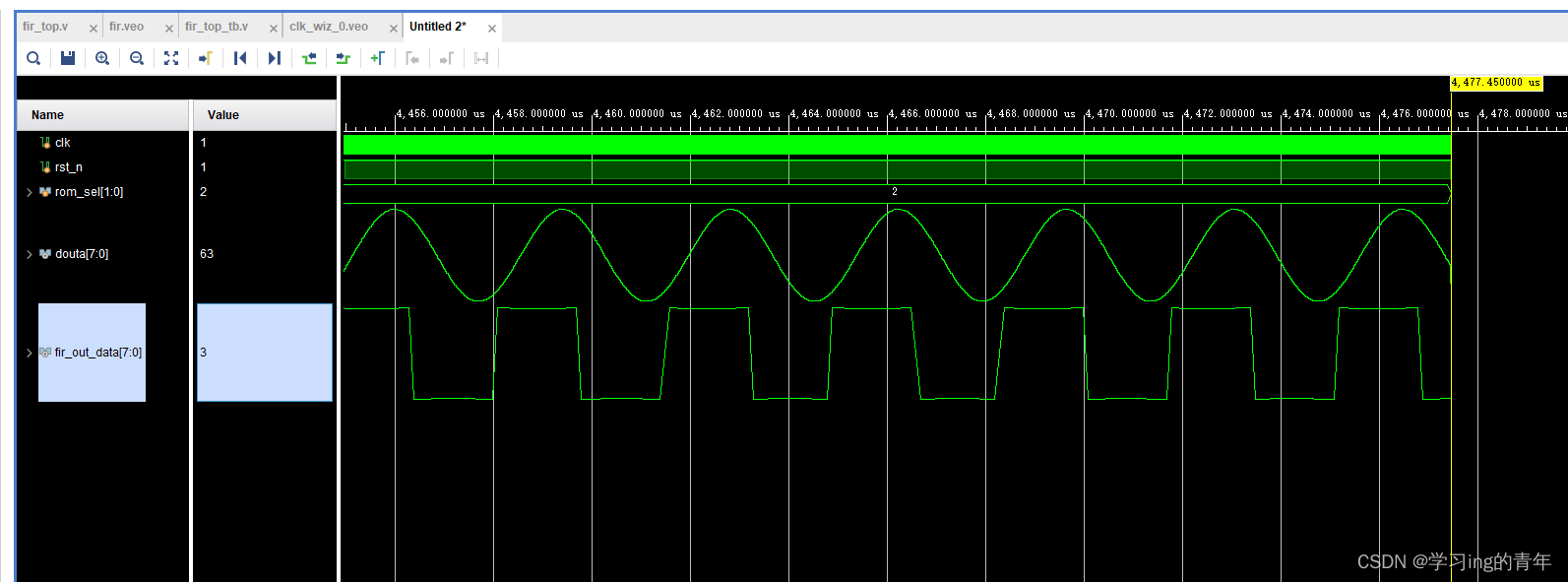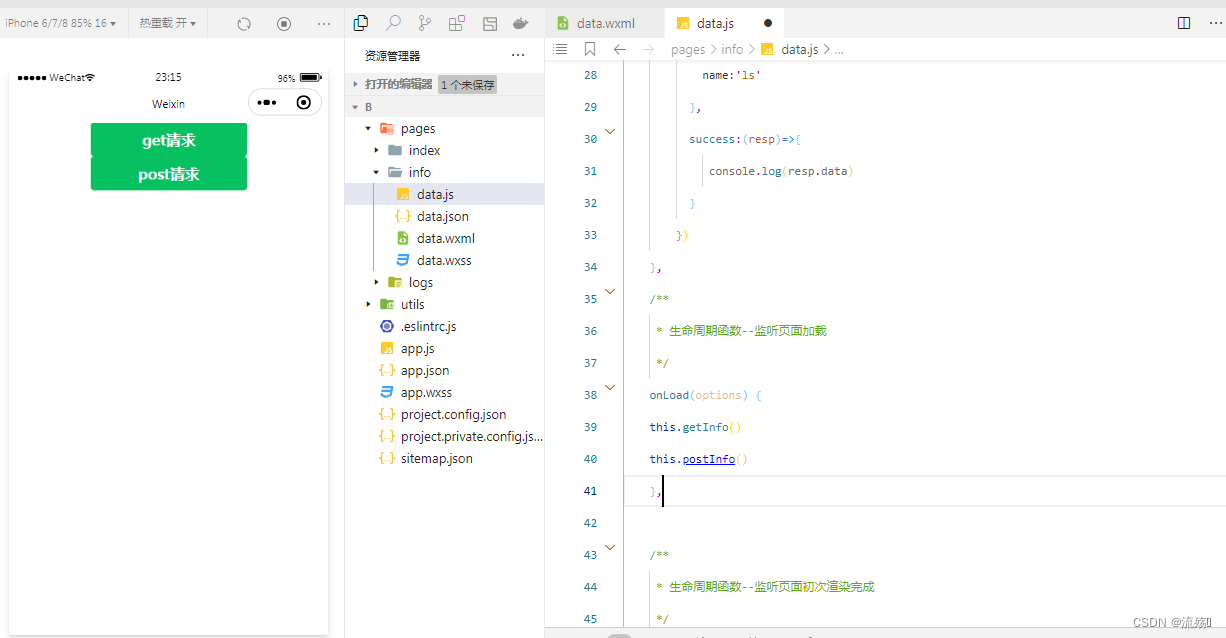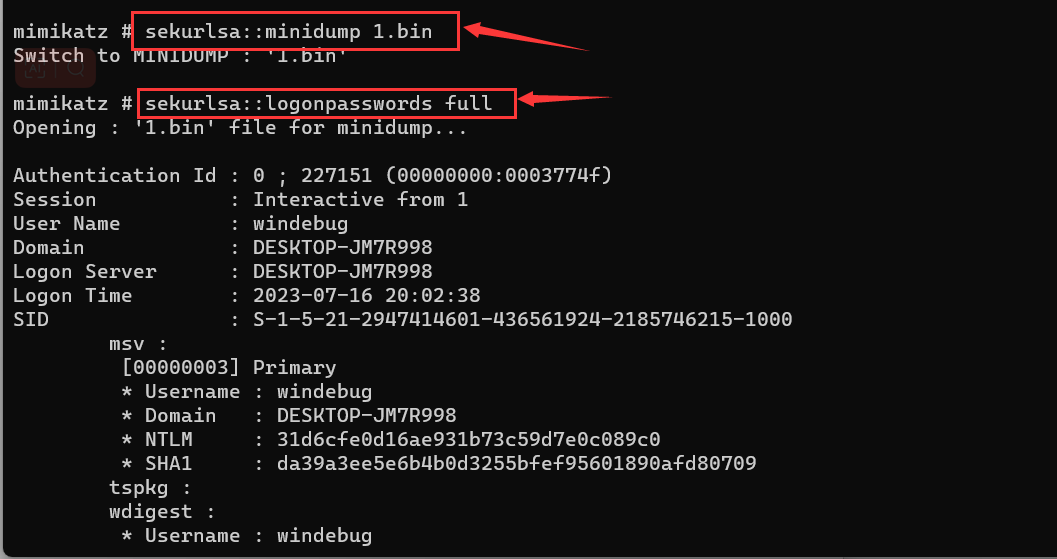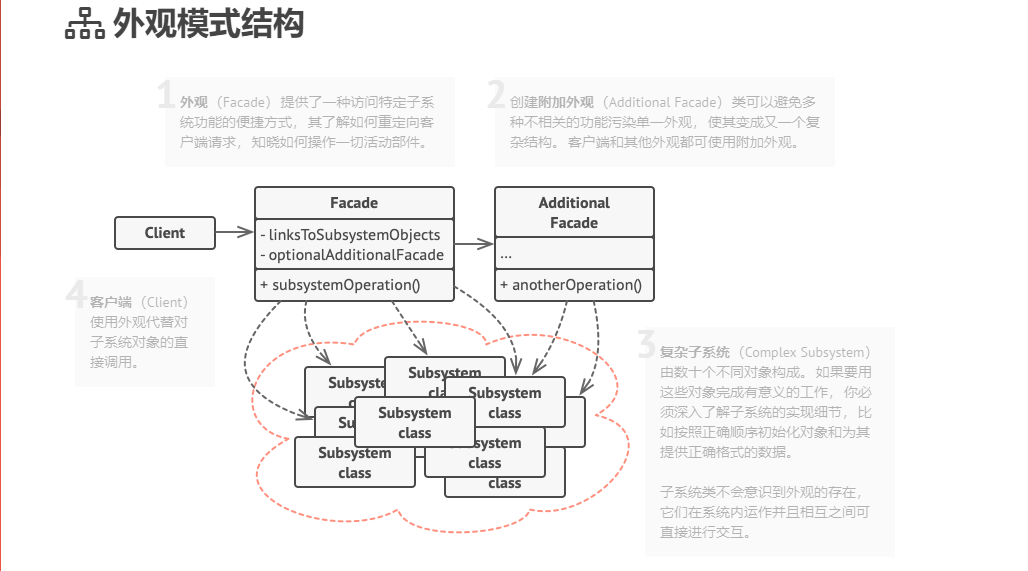上一节我们通过 NuPlayerDriver 了解了 NuPlayer 的使用方式,这一节我们一起来学习 NuPlayer 的部分实现细节。
ps:之前用 NuPlayer 播放本地视频很多都无法播放,所以觉得它不太行,这两天重新阅读发现它的功能其实很全面,无法播放都是Extractor的锅,NuPlayer 有很多细节值得学习!
1、NuPlayer结构
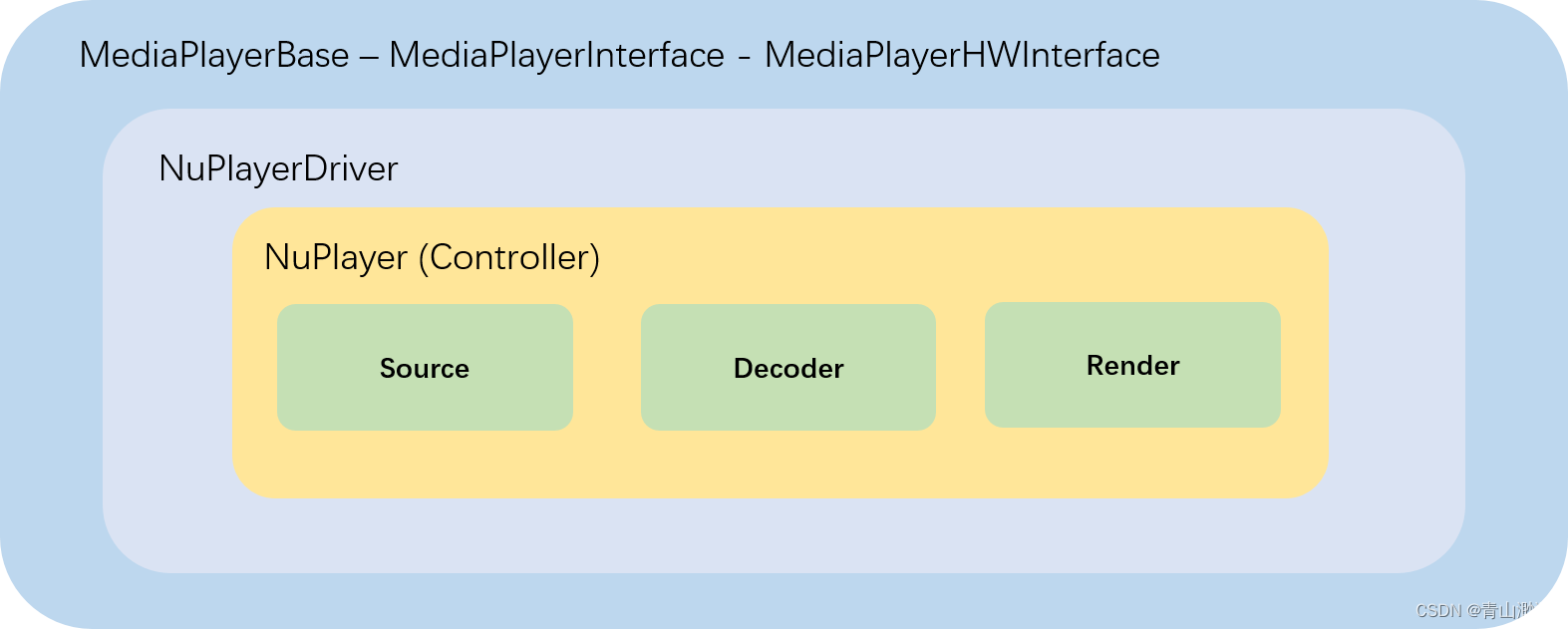
我将 NuPlayer 拆成4部分来学习,分别是:
- Source:数据源,包括 IO 和 demux 两部分;
- Decoder:编解码组件,使用 MediaCodec 实现;
- Render:用于解码后的数据渲染与 Avsync;
- Controller:以上三个部分的控制器,这里指的是 NuPlayer 自身;
2、NuPlayer控制接口的实现
2.1、setDataSourceAsync
setDataSource 是用来根据传进来的 url 创建对应类型 Source 的,这里找一个最常用的版本:
void NuPlayer::setDataSourceAsync(const sp<IMediaHTTPService> &httpService,const char *url,const KeyedVector<String8, String8> *headers) {// 1. 异步消息处理sp<AMessage> msg = new AMessage(kWhatSetDataSource, this);size_t len = strlen(url);// 2. 用于Source 给 NuPlayer 的 Callbacksp<AMessage> notify = new AMessage(kWhatSourceNotify, this);sp<Source> source;// 3. 根据 url 创建对应的 Sourceif (IsHTTPLiveURL(url)) {source = new HTTPLiveSource(notify, httpService, url, headers);mDataSourceType = DATA_SOURCE_TYPE_HTTP_LIVE;} else if (!strncasecmp(url, "rtsp://", 7)) {source = new RTSPSource(notify, httpService, url, headers, mUIDValid, mUID);mDataSourceType = DATA_SOURCE_TYPE_RTSP;} else if ((!strncasecmp(url, "http://", 7)|| !strncasecmp(url, "https://", 8))&& ((len >= 4 && !strcasecmp(".sdp", &url[len - 4]))|| strstr(url, ".sdp?"))) {source = new RTSPSource(notify, httpService, url, headers, mUIDValid, mUID, true);mDataSourceType = DATA_SOURCE_TYPE_RTSP;} else {sp<GenericSource> genericSource =new GenericSource(notify, mUIDValid, mUID, mMediaClock);status_t err = genericSource->setDataSource(httpService, url, headers);if (err == OK) {source = genericSource;} else {ALOGE("Failed to set data source!");}mDataSourceType = DATA_SOURCE_TYPE_GENERIC_URL;}msg->setObject("source", source);msg->post();
}
- NuPlayer 使用 android 异步消息处理机制来处理上层调用;
- 创建一个 AMessage 并将 target 设定为 NuPlayer 自身,从而实现 Source 到 NuPlayer 的 Callback;
- 根据 url 创建对应的 Source
- 如果 url 以
.m3u8结尾,那么认为这是一个直播源,创建HTTPLiveSource; - 如果 url 以
rtsp://开头,那么创建RTSPSource; - 如果 url 以
http://https://开头,并以.sdp结尾,那么创建RTSPSource,但是和上面的参数上会有区别; - 如果上面的条件不满足,则创建
GenericSource,一般是用来播放本地文件的。
- 如果 url 以
- 设定对应的 mDataSourceType;
我们在上一篇笔记中说到,setDataSource 必须是同步调用,NuPlayer 完成 Source 创建后会 Callback 给 NuPlayerDriver:
case kWhatSetDataSource:{CHECK(mSource == NULL);status_t err = OK;sp<RefBase> obj;CHECK(msg->findObject("source", &obj));if (obj != NULL) {Mutex::Autolock autoLock(mSourceLock);mSource = static_cast<Source *>(obj.get());} else {err = UNKNOWN_ERROR;}CHECK(mDriver != NULL);sp<NuPlayerDriver> driver = mDriver.promote();if (driver != NULL) {driver->notifySetDataSourceCompleted(err);}break;}
setDataSource 完成后,一些和 Source 相关的方法就可以调用了,比如 setBufferingSettings。
2.2、prepareAsync
prepare 控制的内容很简单,就是调用 Source 的 prepareAsync 方法:
case kWhatPrepare:{ALOGV("onMessageReceived kWhatPrepare");mSource->prepareAsync();break;}
Source prepareAsync 完成后会调用 post 将消息发送回来:
case Source::kWhatPrepared:{// 1、ALOGV("NuPlayer::onSourceNotify Source::kWhatPrepared source: %p", mSource.get());if (mSource == NULL) {// This is a stale notification from a source that was// asynchronously preparing when the client called reset().// We handled the reset, the source is gone.break;}int32_t err;CHECK(msg->findInt32("err", &err));if (err != OK) {// shut down potential secure codecs in case client never calls resetmDeferredActions.push_back(new FlushDecoderAction(FLUSH_CMD_SHUTDOWN /* audio */,FLUSH_CMD_SHUTDOWN /* video */));processDeferredActions();} else {mPrepared = true;}sp<NuPlayerDriver> driver = mDriver.promote();if (driver != NULL) {// notify duration first, so that it's definitely set when// the app received the "prepare complete" callback.int64_t durationUs;if (mSource->getDuration(&durationUs) == OK) {driver->notifyDuration(durationUs);}driver->notifyPrepareCompleted(err);}break;}
这里有对 prepareAsync 过程中调用 reset 的情况做一些处理,如果 Source 被reset销毁变成 NULL,那么就不会上抛回调消息。
2.3、start
case kWhatStart:{ALOGV("kWhatStart");if (mStarted) {// do not resume yet if the source is still bufferingif (!mPausedForBuffering) {onResume();}} else {onStart();}mPausedByClient = false;break;}
如果播放还未开始,则调用 onStart,如果是暂停状态则调用 onResume,但是如果因为 buffer 不足 Source callback 回来调用了 pause,则不做任何操作。
先来看 onStart:
void NuPlayer::onStart(int64_t startPositionUs, MediaPlayerSeekMode mode) {// 1. 启动sourceif (!mSourceStarted) {mSourceStarted = true;mSource->start();}// 1. 如果设置了起播位置,则调用seekif (startPositionUs > 0) {performSeek(startPositionUs, mode);if (mSource->getFormat(false /* audio */) == NULL) {return;}}// 2. 初始化状态mOffloadAudio = false;mAudioEOS = false;mVideoEOS = false;mStarted = true;mPaused = false;uint32_t flags = 0;if (mSource->isRealTime()) {flags |= Renderer::FLAG_REAL_TIME;}// 3. 检查audio video formatbool hasAudio = (mSource->getFormat(true /* audio */) != NULL);bool hasVideo = (mSource->getFormat(false /* audio */) != NULL);if (!hasAudio && !hasVideo) {ALOGE("no metadata for either audio or video source");mSource->stop();mSourceStarted = false;notifyListener(MEDIA_ERROR, MEDIA_ERROR_UNKNOWN, ERROR_MALFORMED);return;}ALOGV_IF(!hasAudio, "no metadata for audio source"); // video only streamsp<MetaData> audioMeta = mSource->getFormatMeta(true /* audio */);audio_stream_type_t streamType = AUDIO_STREAM_MUSIC;if (mAudioSink != NULL) {streamType = mAudioSink->getAudioStreamType();}// 4. 判断当前 audio format 是否支持 offload 模式,如果是DRM视频,则不允许 offloadmOffloadAudio =canOffloadStream(audioMeta, hasVideo, mSource->isStreaming(), streamType)&& (mPlaybackSettings.mSpeed == 1.f && mPlaybackSettings.mPitch == 1.f);// Modular DRM: Disabling audio offload if the source is protectedif (mOffloadAudio && mIsDrmProtected) {mOffloadAudio = false;}if (mOffloadAudio) {flags |= Renderer::FLAG_OFFLOAD_AUDIO;}// 5. 创建Render,创建 RendererLooper 处理 Render的事件sp<AMessage> notify = new AMessage(kWhatRendererNotify, this);++mRendererGeneration;notify->setInt32("generation", mRendererGeneration);mRenderer = new Renderer(mAudioSink, mMediaClock, notify, flags);mRendererLooper = new ALooper;mRendererLooper->setName("NuPlayerRenderer");mRendererLooper->start(false, false, ANDROID_PRIORITY_AUDIO);mRendererLooper->registerHandler(mRenderer);// 6. 初始化 render 设置status_t err = mRenderer->setPlaybackSettings(mPlaybackSettings);if (err != OK) {mSource->stop();mSourceStarted = false;notifyListener(MEDIA_ERROR, MEDIA_ERROR_UNKNOWN, err);return;}float rate = getFrameRate();if (rate > 0) {mRenderer->setVideoFrameRate(rate);}// 7. 如果当前有 video 和 audio decoder,将decoder 和 render绑定if (mVideoDecoder != NULL) {mVideoDecoder->setRenderer(mRenderer);}if (mAudioDecoder != NULL) {mAudioDecoder->setRenderer(mRenderer);}startPlaybackTimer("onstart");// 8. 调用 postScanSourcespostScanSources();
}
虽然 onStart 方法比较长,但是还是比较有条理的,启动了 Source,创建并启动 Render,创建并启动 Decoder:
- 启动 Source,对起播位置进行设定;
- 检查视频是否含有audio video source,如果都没有则该视频不能播放;
- 判断当前 audio format 是否支持 offload 模式,如果是DRM视频,则不允许 offload,audio 的工作方式将会影响 Render 的工作方式;
- 创建Render,创建 RendererLooper 处理 Render的事件,初始化 Render 设定;
- 调用 postScanSources 创建 Decoder;
接下来看 postScanSources 是如何创建 Decoder 的:
case kWhatScanSources:{bool rescan = false;// 1. 创建 videoif (mSurface != NULL) {if (instantiateDecoder(false, &mVideoDecoder) == -EWOULDBLOCK) {rescan = true;}}// 2. 创建 audio// Don't try to re-open audio sink if there's an existing decoder.if (mAudioSink != NULL && mAudioDecoder == NULL) {if (instantiateDecoder(true, &mAudioDecoder) == -EWOULDBLOCK) {rescan = true;}}// 3. 如果创建失败则重新扫描if (rescan) {msg->post(100000LL);mScanSourcesPending = true;}break;}
- 如果 Surface 不为 NULL,那么就会调用 instantiateDecoder 创建 video decoder;
- mAudioSink 不为 NULL,那么就会去创建 audio decoder;
- 如果有哪一个 decoder 创建失败,那么就会不断发送 kWhatScanSources 扫描 source,直到 video 和 audio decoder 都创建完成。
从这里我们大致可以猜到,播放过程中是可以先只播放 video 或者 audio,再中途追加播放另一个,只要 avsync 能够支援就行。
status_t NuPlayer::instantiateDecoder(bool audio, sp<DecoderBase> *decoder, bool checkAudioModeChange) {// 1. 检查 decoder 是否已经创建,如果已经创建则不重复创建if (*decoder != NULL || (audio && mFlushingAudio == SHUT_DOWN)) {return OK;}// 2. 获取 format,如果没有 format 则退出等待下次扫描sp<AMessage> format = mSource->getFormat(audio);if (format == NULL) {return UNKNOWN_ERROR;} else {status_t err;if (format->findInt32("err", &err) && err) {return err;}}format->setInt32("priority", 0 /* realtime */);if (mDataSourceType == DATA_SOURCE_TYPE_RTP) {ALOGV("instantiateDecoder: set decoder error free on stream corrupt.");format->setInt32("corrupt-free", true);}// 3. 创建 CCDecoder,初始化Video Decoder config formatif (!audio) {AString mime;CHECK(format->findString("mime", &mime));sp<AMessage> ccNotify = new AMessage(kWhatClosedCaptionNotify, this);if (mCCDecoder == NULL) {mCCDecoder = new CCDecoder(ccNotify);}if (mSourceFlags & Source::FLAG_SECURE) {format->setInt32("secure", true);}if (mSourceFlags & Source::FLAG_PROTECTED) {format->setInt32("protected", true);}float rate = getFrameRate();if (rate > 0) {format->setFloat("operating-rate", rate * mPlaybackSettings.mSpeed);}}Mutex::Autolock autoLock(mDecoderLock);if (audio) {sp<AMessage> notify = new AMessage(kWhatAudioNotify, this);++mAudioDecoderGeneration;notify->setInt32("generation", mAudioDecoderGeneration);if (checkAudioModeChange) {determineAudioModeChange(format);}// 4. 创建 audio decoder,如果是offload 模式则创建DecoderPassThrough,否则创建Decoderif (mOffloadAudio) {mSource->setOffloadAudio(true /* offload */);const bool hasVideo = (mSource->getFormat(false /*audio */) != NULL);format->setInt32("has-video", hasVideo);*decoder = new DecoderPassThrough(notify, mSource, mRenderer);ALOGV("instantiateDecoder audio DecoderPassThrough hasVideo: %d", hasVideo);} else {mSource->setOffloadAudio(false /* offload */);*decoder = new Decoder(notify, mSource, mPID, mUID, mRenderer);ALOGV("instantiateDecoder audio Decoder");}mAudioDecoderError = false;} else {sp<AMessage> notify = new AMessage(kWhatVideoNotify, this);++mVideoDecoderGeneration;notify->setInt32("generation", mVideoDecoderGeneration);// 5. 创建 video decoder*decoder = new Decoder(notify, mSource, mPID, mUID, mRenderer, mSurface, mCCDecoder);mVideoDecoderError = false;// enable FRC if high-quality AV sync is requested, even if not// directly queuing to display, as this will even improve textureview// playback.{if (property_get_bool("persist.sys.media.avsync", false)) {format->setInt32("auto-frc", 1);}}}// 6. 调用创建的decoder的init方法(*decoder)->init();// Modular DRMif (mIsDrmProtected) {format->setPointer("crypto", mCrypto.get());ALOGV("instantiateDecoder: mCrypto: %p (%d) isSecure: %d", mCrypto.get(),(mCrypto != NULL ? mCrypto->getStrongCount() : 0),(mSourceFlags & Source::FLAG_SECURE) != 0);}// 7. 调用创建的decoder的configure方法(*decoder)->configure(format);return OK;
}
- 检查 decoder 是否已经创建,如果已经创建则不重复创建;
- 获取 format,如果没有 format 则退出等待下次扫描;
- 如果是要创建video decoder,则创建 CCDecoder,初始化Video Decoder config format;
- 创建 audio decoder,如果是offload 模式则创建DecoderPassThrough,否则创建Decoder
- 创建 video decoder
- 调用创建的decoder的init方法
- 调用创建的decoder的configure方法
在创建 VideoDecoder 和 AudioDecoder 时,需要将 render 作为参数传递进去,这里已经将decoder 和 render 做了绑定。
NuPlayerDecoder 没有start接口,configure 调用中会自动完成 start调用,所以 instantiateDecoder 调用完成后 decoder 就已经启动完成了。
2.4、pause
pause 方法很简单,只要将 Source 和 Render 都 pause 就行,Decoder 无法从 Source 拿到数据,那么自然而然就暂停了。
void NuPlayer::onPause() {updatePlaybackTimer(true /* stopping */, "onPause");if (mPaused) {return;}mPaused = true;if (mSource != NULL) {mSource->pause();} else {ALOGW("pause called when source is gone or not set");}if (mRenderer != NULL) {mRenderer->pause();} else {ALOGW("pause called when renderer is gone or not set");}
}
这里再看 start 方法中的 onResume,恢复 Source 和 Renderer 的动作就行:
void NuPlayer::onResume() {if (!mPaused || mResetting) {ALOGD_IF(mResetting, "resetting, onResume discarded");return;}mPaused = false;if (mSource != NULL) {mSource->resume();} else {ALOGW("resume called when source is gone or not set");}// |mAudioDecoder| may have been released due to the pause timeout, so re-create it if// needed.if (audioDecoderStillNeeded() && mAudioDecoder == NULL) {instantiateDecoder(true /* audio */, &mAudioDecoder);}if (mRenderer != NULL) {mRenderer->resume();} else {ALOGW("resume called when renderer is gone or not set");}
}
2.5、resetAsync
void NuPlayer::resetAsync() {sp<Source> source;{Mutex::Autolock autoLock(mSourceLock);source = mSource;}if (source != NULL) {source->disconnect();}(new AMessage(kWhatReset, this))->post();
}
由于 Source 可能会出现阻塞的情况,所以 resetAsync 处理过程中需要先调用 Source.disconnect ,从达到加速reset的目的。
case kWhatReset:{mResetting = true;// 1. flushmDeferredActions.push_back(new FlushDecoderAction(FLUSH_CMD_SHUTDOWN /* audio */,FLUSH_CMD_SHUTDOWN /* video */));// 2. resetmDeferredActions.push_back(new SimpleAction(&NuPlayer::performReset));processDeferredActions();break;}
reset 的过程分为两个步骤:
- flush:刷新 decoder render 中的数据,立即停止播放;
- reset:释放 decoder render source 的资源;
先来看下 processDeferredActions 方法,这里用到一种延迟处理的机制,一开始我不是很理解为什么这里要用这种机制,为什么不直接按顺序 post 一条消息呢?仔细阅读注释可以发现意思是这样:当不在即时状态时,我们将不会执行被延迟的方法。看起来还是有点难懂,但是它后面还举了例子,当 decoder 进入到了 flushing 和 shutting down 的状态时,这些被延迟的方法将不再被处理。
我的理解是这样,接下来需要执行的几个 Action 必须是要按照顺序执行的,但是目前处在 onMessageReceived 处理过程中,用 postAwaitResponse 等待返回肯定是不行的;如果按顺序 post 消息执行,由于 Action 执行的任务是异步的,并不能保证后面 Action 执行时前面的 Action 已经执行完成。所以这里用了 DeferredActions 机制,处理 Action 时先检查状态,如果状态不如预期则延迟执行,等待上一条 Action 执行完成后再调用 processDeferredActions 统一执行延迟的任务,从而保证了执行顺序。
void NuPlayer::processDeferredActions() {while (!mDeferredActions.empty()) {// We won't execute any deferred actions until we're no longer in// an intermediate state, i.e. one more more decoders are currently// flushing or shutting down.if (mFlushingAudio != NONE || mFlushingVideo != NONE) {// We're currently flushing, postpone the reset until that's// completed.ALOGV("postponing action mFlushingAudio=%d, mFlushingVideo=%d",mFlushingAudio, mFlushingVideo);break;}sp<Action> action = *mDeferredActions.begin();mDeferredActions.erase(mDeferredActions.begin());action->execute(this);}
}
接下来看 flush 流程,核心是调用的 decoder,并且将参数 needShutdown 置为 true
void NuPlayer::performDecoderFlush(FlushCommand audio, FlushCommand video) {ALOGV("performDecoderFlush audio=%d, video=%d", audio, video);if ((audio == FLUSH_CMD_NONE || mAudioDecoder == NULL)&& (video == FLUSH_CMD_NONE || mVideoDecoder == NULL)) {return;}if (audio != FLUSH_CMD_NONE && mAudioDecoder != NULL) {flushDecoder(true /* audio */, (audio == FLUSH_CMD_SHUTDOWN));}if (video != FLUSH_CMD_NONE && mVideoDecoder != NULL) {flushDecoder(false /* audio */, (video == FLUSH_CMD_SHUTDOWN));}
}
flushDecoder 的核心是调用 Decoder 的 signalFlush 方法,并且将 mFlushingAudio 和 mFlushingVideo 置为 FLUSHING_DECODER_SHUTDOWN ,这将终止 decoder 的运行;如果是单纯的 flush 两个标志将被置为 FLUSHING_DECODER,decoder 将会继续运行。
void NuPlayer::flushDecoder(bool audio, bool needShutdown) {ALOGV("[%s] flushDecoder needShutdown=%d",audio ? "audio" : "video", needShutdown);const sp<DecoderBase> &decoder = getDecoder(audio);if (decoder == NULL) {ALOGI("flushDecoder %s without decoder present",audio ? "audio" : "video");return;}// Make sure we don't continue to scan sources until we finish flushing.++mScanSourcesGeneration;if (mScanSourcesPending) {if (!needShutdown) {mDeferredActions.push_back(new SimpleAction(&NuPlayer::performScanSources));}mScanSourcesPending = false;}decoder->signalFlush();FlushStatus newStatus =needShutdown ? FLUSHING_DECODER_SHUTDOWN : FLUSHING_DECODER;mFlushComplete[audio][false /* isDecoder */] = (mRenderer == NULL);mFlushComplete[audio][true /* isDecoder */] = false;if (audio) {ALOGE_IF(mFlushingAudio != NONE,"audio flushDecoder() is called in state %d", mFlushingAudio);mFlushingAudio = newStatus;} else {ALOGE_IF(mFlushingVideo != NONE,"video flushDecoder() is called in state %d", mFlushingVideo);mFlushingVideo = newStatus;}
}
由于 mFlushingAudio 和 mFlushingVideo 不再是 FLUSH_CMD_NONE,所以 flushDecoder 执行完成后将暂时跳过 performReset 的执行。我们之前了解到 reset 是阻塞执行的,那这里是不是就卡死了呢?
当然不会,decoder 执行完 flush之后会 callback 回来。调用 flush 的过程中 render 也会被 flush,同样也会有个 callback回来,render callback的处理内容和decoder类似,这里暂时就不贴了。
else if (what == DecoderBase::kWhatFlushCompleted) {ALOGV("decoder %s flush completed", audio ? "audio" : "video");handleFlushComplete(audio, true /* isDecoder */);finishFlushIfPossible();}
mFlushComplete 分为两组:
| isAudio | isDecoder |
|---|---|
| audio | decoder |
| audio | render |
| video | decoder |
| video | render |
handleFlushComplete 需要分别等到audio 和 video 的 decoder 和 render 的 flush callback 都上抛才会真正去执行,如果当前的 FlushStatus 是 FLUSHING_DECODER,那么flush过程就完成了;如果FlushStatus 是 FLUSHING_DECODER_SHUTDOWN,那么还会继续调用 decoder 的 initiateShutdown 方法去释放 decoder 中的资源,并将 status 重新置为 SHUTTING_DOWN_DECODER。
void NuPlayer::handleFlushComplete(bool audio, bool isDecoder) {// We wait for both the decoder flush and the renderer flush to complete// before entering either the FLUSHED or the SHUTTING_DOWN_DECODER state.mFlushComplete[audio][isDecoder] = true;if (!mFlushComplete[audio][!isDecoder]) {return;}FlushStatus *state = audio ? &mFlushingAudio : &mFlushingVideo;switch (*state) {case FLUSHING_DECODER:{*state = FLUSHED;break;}case FLUSHING_DECODER_SHUTDOWN:{*state = SHUTTING_DOWN_DECODER;ALOGV("initiating %s decoder shutdown", audio ? "audio" : "video");getDecoder(audio)->initiateShutdown();break;}default:// decoder flush completes only occur in a flushing state.LOG_ALWAYS_FATAL_IF(isDecoder, "decoder flush in invalid state %d", *state);break;}
}
由于 status 为 SHUTTING_DOWN_DECODER,finishFlushIfPossible 将不会有什么动作,接下来会继续等待 decoder shutdown 完成上抛 callback。
else if (what == DecoderBase::kWhatShutdownCompleted) {ALOGV("%s shutdown completed", audio ? "audio" : "video");if (audio) {Mutex::Autolock autoLock(mDecoderLock);mAudioDecoder.clear();mAudioDecoderError = false;++mAudioDecoderGeneration;CHECK_EQ((int)mFlushingAudio, (int)SHUTTING_DOWN_DECODER);mFlushingAudio = SHUT_DOWN;} else {Mutex::Autolock autoLock(mDecoderLock);mVideoDecoder.clear();mVideoDecoderError = false;++mVideoDecoderGeneration;CHECK_EQ((int)mFlushingVideo, (int)SHUTTING_DOWN_DECODER);mFlushingVideo = SHUT_DOWN;}finishFlushIfPossible();}
收到 kWhatShutdownCompleted 之后 NuPlayer 将会释放掉 decoder,然后执行 finishFlushIfPossible。
finishFlushIfPossible 会重置 mFlushingAudio 和 mFlushingVideo 的状态,然后执行剩下来的被推迟的方法,接下来要执行的是 performReset,进行 reset 函数的收尾。
void NuPlayer::performReset() {ALOGV("performReset");CHECK(mAudioDecoder == NULL);CHECK(mVideoDecoder == NULL);updatePlaybackTimer(true /* stopping */, "performReset");updateRebufferingTimer(true /* stopping */, true /* exiting */);cancelPollDuration();++mScanSourcesGeneration;mScanSourcesPending = false;if (mRendererLooper != NULL) {if (mRenderer != NULL) {mRendererLooper->unregisterHandler(mRenderer->id());}mRendererLooper->stop();mRendererLooper.clear();}mRenderer.clear();++mRendererGeneration;if (mSource != NULL) {mSource->stop();Mutex::Autolock autoLock(mSourceLock);mSource.clear();}if (mDriver != NULL) {sp<NuPlayerDriver> driver = mDriver.promote();if (driver != NULL) {driver->notifyResetComplete();}}mStarted = false;mPrepared = false;mResetting = false;mSourceStarted = false;// Modular DRMif (mCrypto != NULL) {// decoders will be flushed before this so their mCrypto would go away on their own// TODO change to ALOGVALOGD("performReset mCrypto: %p (%d)", mCrypto.get(),(mCrypto != NULL ? mCrypto->getStrongCount() : 0));mCrypto.clear();}mIsDrmProtected = false;
}
reset 函数将会停止并销毁掉 renderLooper 和 render,停止并销毁掉 Source,最后 callback 通知 NuPlayerDriver reset 操作完成。
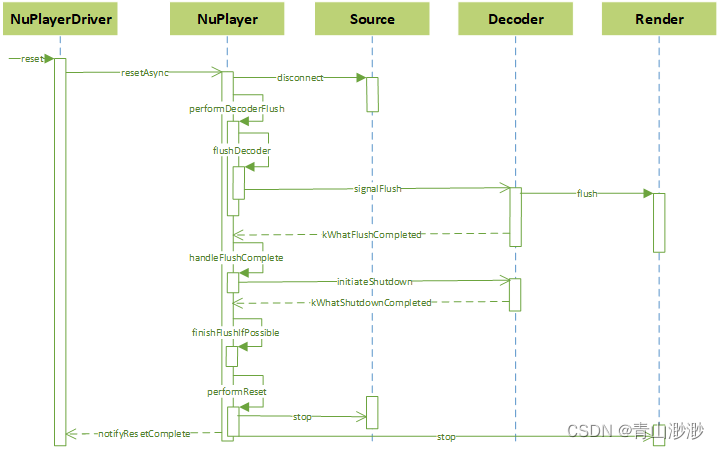
2.6、seekToAsync
如果调用 seekToAsync 时已经 prepare 完成但是还没起播,那么调用 seek 方法会帮助我们调用 start,解出内容后就暂停,从而达到预览的效果。
case kWhatSeek:{int64_t seekTimeUs;int32_t mode;int32_t needNotify;CHECK(msg->findInt64("seekTimeUs", &seekTimeUs));CHECK(msg->findInt32("mode", &mode));CHECK(msg->findInt32("needNotify", &needNotify));if (!mStarted) {// Seek before the player is started. In order to preview video,// need to start the player and pause it. This branch is called// only once if needed. After the player is started, any seek// operation will go through normal path.// Audio-only cases are handled separately.onStart(seekTimeUs, (MediaPlayerSeekMode)mode);if (mStarted) {onPause();mPausedByClient = true;}if (needNotify) {notifyDriverSeekComplete();}break;}mDeferredActions.push_back(new FlushDecoderAction(FLUSH_CMD_FLUSH /* audio */,FLUSH_CMD_FLUSH /* video */));mDeferredActions.push_back(new SeekAction(seekTimeUs, (MediaPlayerSeekMode)mode));// After a flush without shutdown, decoder is paused.// Don't resume it until source seek is done, otherwise it could// start pulling stale data too soon.mDeferredActions.push_back(new ResumeDecoderAction(needNotify));processDeferredActions();break;}
处理 seek 总共分为3个 Action:FlushDecoderAction、SeekAction、ResumeDecoderAction。其中 FlushDecoderAction 我们在上一节中已经了解过了,不一样的是这里并不会走到 shutdown 的流程中。
SeekAction 核心是调用 Source 的 seekTo:
void NuPlayer::performSeek(int64_t seekTimeUs, MediaPlayerSeekMode mode) {ALOGV("performSeek seekTimeUs=%lld us (%.2f secs), mode=%d",(long long)seekTimeUs, seekTimeUs / 1E6, mode);if (mSource == NULL) {// This happens when reset occurs right before the loop mode// asynchronously seeks to the start of the stream.LOG_ALWAYS_FATAL_IF(mAudioDecoder != NULL || mVideoDecoder != NULL,"mSource is NULL and decoders not NULL audio(%p) video(%p)",mAudioDecoder.get(), mVideoDecoder.get());return;}mPreviousSeekTimeUs = seekTimeUs;mSource->seekTo(seekTimeUs, mode);++mTimedTextGeneration;// everything's flushed, continue playback.
}
seek 完成后会立刻调用 resume 恢复播放,如果这里不恢复就会出现黑屏的情况。resume 主要是用来操作 Decoder,调用 Decoder 的 signalResume,signalResume 执行完成后,decoder 重新开始接收数据,开始播放。
void NuPlayer::performResumeDecoders(bool needNotify) {if (needNotify) {mResumePending = true;if (mVideoDecoder == NULL) {// if audio-only, we can notify seek complete now,// as the resume operation will be relatively fast.finishResume();}}if (mVideoDecoder != NULL) {// When there is continuous seek, MediaPlayer will cache the seek// position, and send down new seek request when previous seek is// complete. Let's wait for at least one video output frame before// notifying seek complete, so that the video thumbnail gets updated// when seekbar is dragged.mVideoDecoder->signalResume(needNotify);}if (mAudioDecoder != NULL) {mAudioDecoder->signalResume(false /* needNotify */);}
}void NuPlayer::finishResume() {if (mResumePending) {mResumePending = false;notifyDriverSeekComplete();}
}
关于 seekToAsync 的第三个参数 needNotify 还要提一下,这里这么设计是因为 seekToAsync 除了我们主动调用外,NuPlayerDriver 那边还有可能自动调用。我们主动调用,需要将执行完成的消息 Callback 到上层,另外stop之后再重新prepare也会调用seek,这里也需要 Callback;自动调用指的是播放结束再调用 start,这里会 seek 到0的位置,不需要 Callback通知上层。
还有一点自己的理解,之前我们大致了解 prepare 是一个异步处理的过程,这个过程中 reset 需要有一些特殊的处理,这里的 seek 也是异步的过程,那 seek 过程中 reset 或者 stop 需要有特殊处理吗?答案是不需要的,seek 会在 Looper 执行,reset 和 stop 的消息需要等待 seek 执行完成再处理,所以这是是顺序执行的,并没有真正的异步。
3、总结
到这里 NuPlayer 的了解就告一段落,里面异步处理的思想 和 播放器的处理流程 还是要多多揣摩学习,回想起自己写的 Player 各种处理速度都不理想,还是太年轻了。
这里再整理关键方法需要执行的内容:
- setDataSourceAsync:
- create Source
- prepareAsync
- Source.prepareAsync
- start
- create Render
- create Decoder,start Decoder and Render
- pause
- pause Source
- pause Render
- start (resume)
- resume Source
- resume Render
- seekToAsync
- flush Decoder (pause) and Render
- seek Source
- resume Decoder and Render
- resetAsync
- disconnect Source
- flush Decoder and Render
- shut down Decoder
- release Decoder
- stop and release Render
- stop and release Source
再对比下两个暂停的实现方式:
pause 通过暂停 Source 送数据,暂停 Render 渲染数据来完成,Decoder 不需要暂停;
flush 的暂停通过不给 Decoder 喂数据来实现,不需要暂停 Source。



